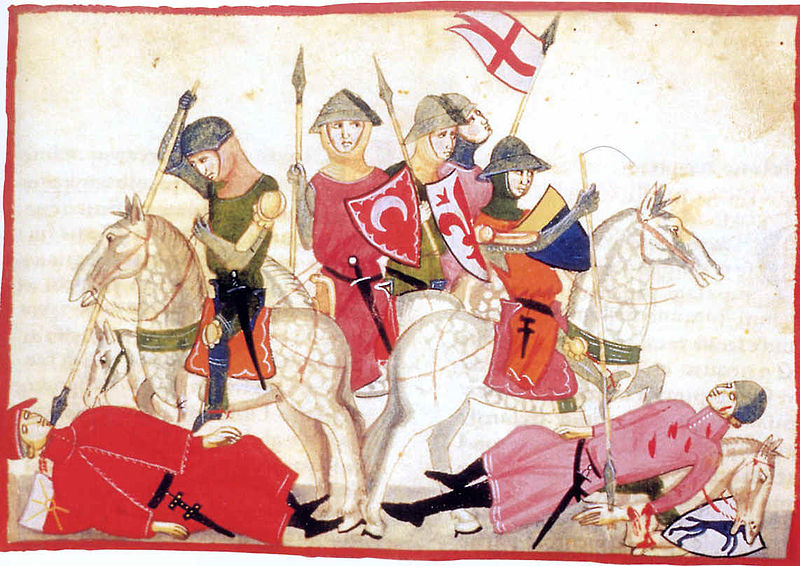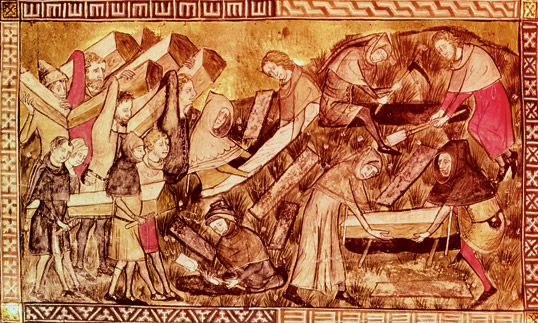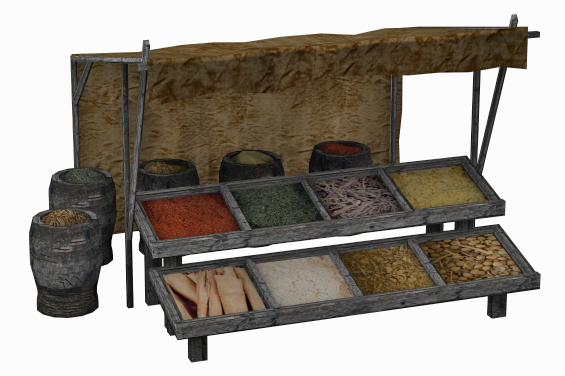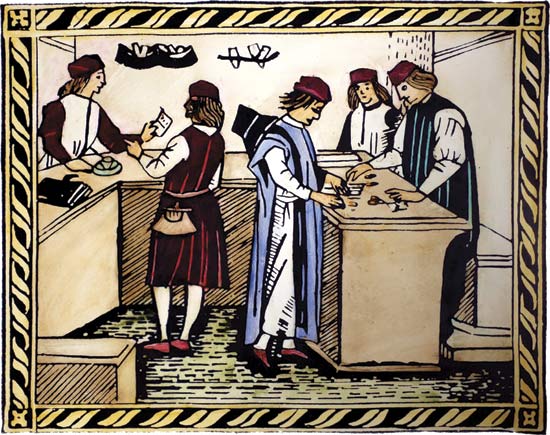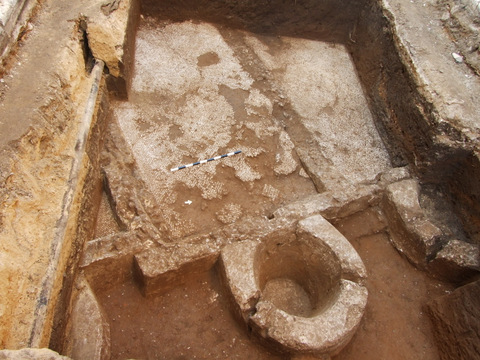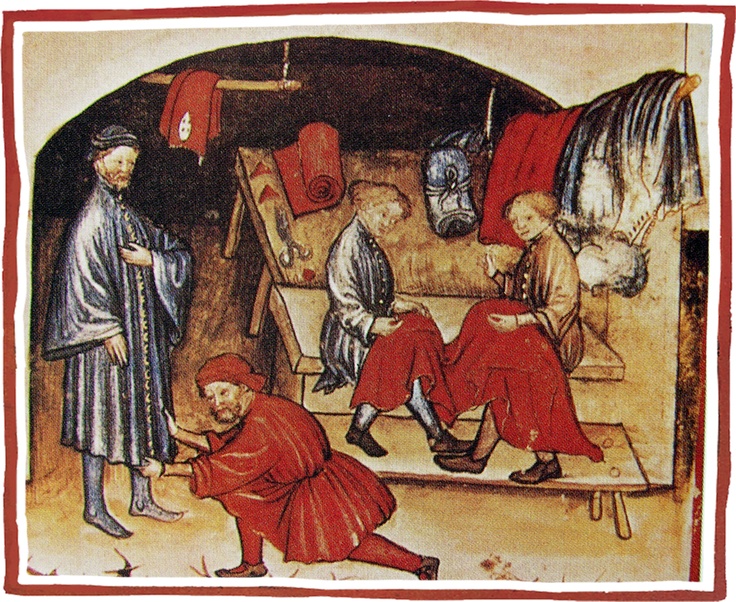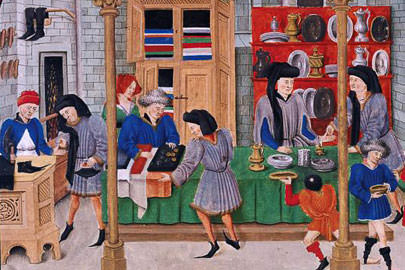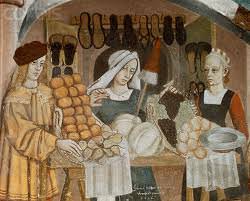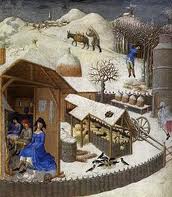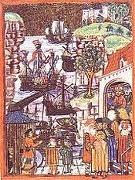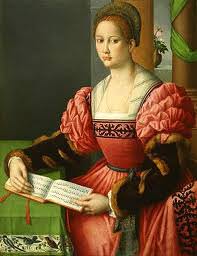The Origins of Local Society in late Anglo-Saxon England
The Origins of Local Society in late Anglo-Saxon England Hirokazu Tsurushima Paper given at: The Third Japanese-Korean Conference of British History (2008) Abstract…
Two dozen and more Silkwomen of Fifteenth-Century London
This article attempts to record systematically all the silkwomen of London who were daughters or wives of London mercers between 1400 and 1499.
Past/Present: Leonardo Bruni’s History of Florence
Past/Present: Leonardo Bruni’s History of Florence Giuseppe Bisaccia Renaissance and Reformation, Vol. 21, No 1 (1985) Abstract The importance of historical consciousness in the…
Knighthood in later medieval Italy
There is a clear reason for this general discounting of Italian knighthood in the later Middle Ages. The traditional focus of northern Italian historiography being cities and civic life, knighthood has struggled to find a place in the world of communes and city-states, merchants and markets.
Plagues, Epidemics and Their Social and Economic Impact on the Egyptian Society during the Mameluke Period
The study aims at shedding light on plagues and epidemics that hit Egypt during the Mameluke period through describing the plague disease and the plagues and epidemics that hit Egypt, and their social and economic effects on the Egyptian society, The study is based on some historical sources contemporary of the Mameluke period, especially the book “Al-Suluk li-marifatiduwal Al-muluk” by Al Maqrizi.
Organized Collective Violence in Twelfth and Thirteenth Century Tuscan Countryside: Some Case Studies from Central and North Eastern Tuscany
Violence is often thought of as a characteristic of all medieval societies. How such societies chose to exercise this violence is therefore a good, and understudied, way into understanding the basic rules about how they worked. Concentrating on twelfth and thirteenth century Tuscany, my intention is to show that a specific form of violence, namely organized collective violence, was not an option available to all social groups within the medieval rural society of northern Italy…
Female brewers in Holland and England
I also want to know why women worked in those professions, what the background of these women was and if changes occurred over time.
Economic Credit in Renaissance Florence
What were the social and institutional factors that led to, and reinforced, the precocious emergence of Florentine commercial capitalism, especially in the domain of international merchant banking?
Identifying Women Proprietors in Wills from Fifteenth-Century London
Most Londoners lodged their post obit requests with the Husting Court, the county court of London. The testators were primarily wealthy artisans and merchants, since one needed to possess a substantial amount of property in order to register the details of the division of that property.
Sugar and Spice and All Things Nice: From Oriental Bazar to English Cloister in Anglo-French
Until recently, such limited interest as late Anglo-French was able to arouse amongst scholars specializing in medieval French has been confined, with only a very few exceptions, to the efforts made in the late fourteenth and early fifteenth centuries to teach what was by now a language unknown to most of the inhabitants of a country moving inexorably towards the unchallenged dominance of English as the national language.
Lodovico Capponi: A Florentine Banker and a Lending Transaction in 16th Century Florence
This paper examines how loans transpired in early 16th century Italy, taking a look at a specific transaction involving Lodovico Capponi of Florence and the Vatican in Rome.
New Towns in Medieval France and Nature of Institutions
In its early stages, a new town was a village community created by a central authority (king or overlord) on his wildland to meet the needs of growing populations and to further both its own benefits and the common interests of the inhabitants.
The Virgin Mary in High Medieval England, A Divinely Malleable Woman: Virgin, Intercessor, Protector, Mother, Role Model
This thesis examines the significance of the Virgin Mary in England between the late fifteenth century and early sixteenth century. The primary sources selected indicate the variety of ideas circulating about her during this period. Strictly religious texts such as the Bible and early Christian writings ground Late Medieval beliefs about Mary in their historical context.
Byzantine wine press discovered in Jaffa
Archaeological excavations in the Israeli city of Jaffa have uncovered what was likely a wine press that dates back to the Byzantine era.
The tailors of London and their guild, c.1300-1500
The unusually full medieval records of the guild of London tailors, known from 1503 as the Merchant Taylors’ Company, provides a rare opportunity to assess the variety of roles which these organisations played in late-medieval London.
City and Countryside in Medieval England
An impressive array of data, ranging over the thirteenth and fourteenth centuries, has been collected by two full-time researchers, James Galloway and Margaret Murphy. Of primary importance for the project are demesne farming accounts and inquisitions post mortem (detailing manorial land and other assets, especially again those of the demesne), both of which sources survive in very large numbers for the period under review. Also, the project incorpor- ates large amounts of data from urban records, particularly those dealing with merchants who were prominent in organizing London’s food supply.
CRISIS OF CONTRACTS FOR MERCHANTS IN CRISIS: INSTITUTIONS, CORPORATE FINANCE AND GROWTH IN GENOA (11TH -17TH C.)
My paper focuses these “merchant princes” from Genoa before the “industrial revolution”. The rise and fall of Genoa provides indeed a striking case about the success and failure of what, in the same vein than Bagehot, Joseph Schumpeter called the “creative destruction”, and the role financial markets in that process.
Women, Gender and Guilds in Early Modern Europe
Historians of women and gender, as we might expect, have had a different point of view. In her pioneering 1919 study of women’s working lives in seventeenth-century England, Alice Clark depicted a Golden Age in the medieval period, during which women enjoyed access to skilled and profitable work.
The Impact of Climate Change on Late Medieval English Culture
This thesis challenges the extremes of both environmental determinism and the modernist perspective that humanity exists in social and/or cultural isolation from the natural environment.
Animal keeping and the use of animal products in medieval Emden (Lower Saxony, Germany)
This thesis deals with the faunal remains from several excavations in the centre of the medieval town of Emden (Lower Saxony, Germany; Figure 1-1). The aim of this thesis is to answer questions concerning the development of animal husbandry and the use of animal products in the medieval period.
The 727/1327 Silk Weavers’ Rebellion in Alexandria: Religious Xenophobia, Homophobia, or Economic Grievances
A brawl in the streets of 14th century Alexandria between Egyptians and Europeans – what caused it?
Adventures far from home: Hanseatic trade with the Faroe Islands
he voyage to Iceland, now a major destina- tion, took about four weeks (gardiner & mehler 2007, 403; Krause 2010, 150). The Faroe Islands are situated more or less in the middle of that distance and provided a fine stop-over. The islands were an additional market for their trade business and in case of storms offered a safe and most welcome shelter.
Noble and Urban Family-Structures in the Late Middle Ages in the Hungarian Kingdom
The everyday life of the clan people was filled with disputes over small plots, since it was the main duty of each generation to preserve and enlarge the lands of the clan. It was also the basic interest of the members of the clans to secure the survival of the clan by marriages that were fertile in every sense. It was a sign of the strength of the clan that the members had to consult before taking decisions in questions of marriage, inheritance.
Beyond chicken: avian biodiversity in a Portuguese late medieval urban site
Between 2003 and 2004, prior to the construction of an underground parking in the Avenue Miguel Fernandes, an archaeological rescue excavation was carried out by a team of archaeologists from the company Crivarque…The excavations uncovered 137 silos, of which 109 were fully excavated. The high concentration of silos turned out to be the most striking find of the archaeological works.
Shifting Experiences: The Changing Roles of Women in the Italian, Lowland, and German Regions of Western Europe from the Middle Ages to the Early Modern Period
Specifically, the thesis compares and analyzes the changing roles that women could employ economically, politically, socially, and religiously.


